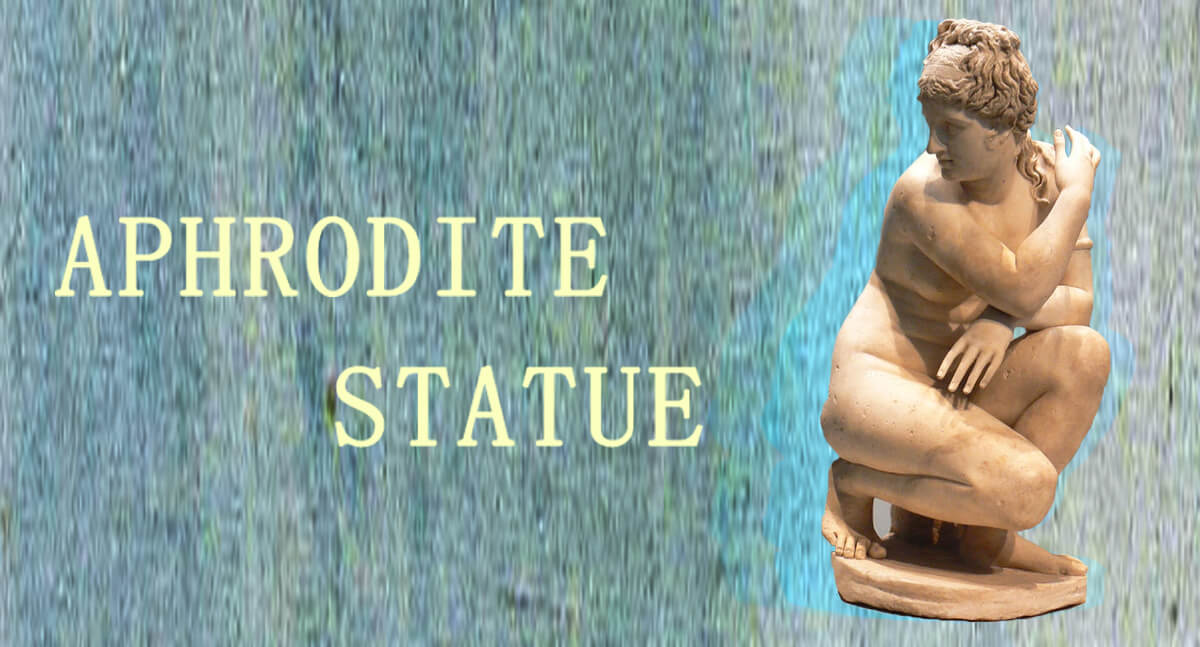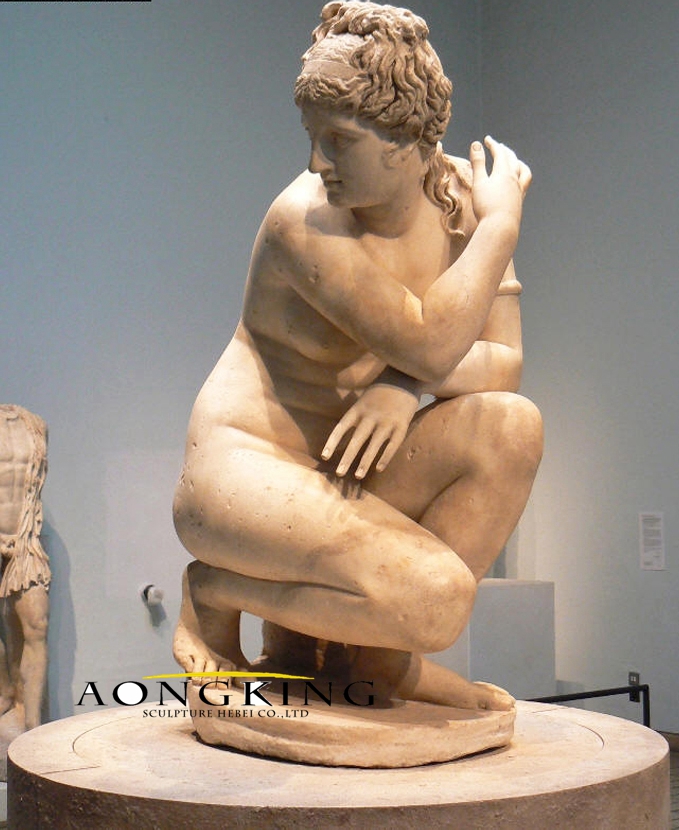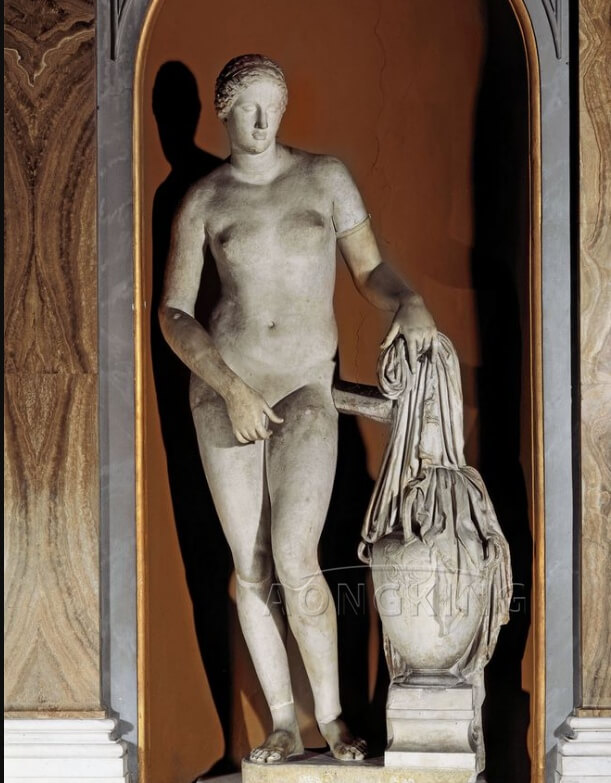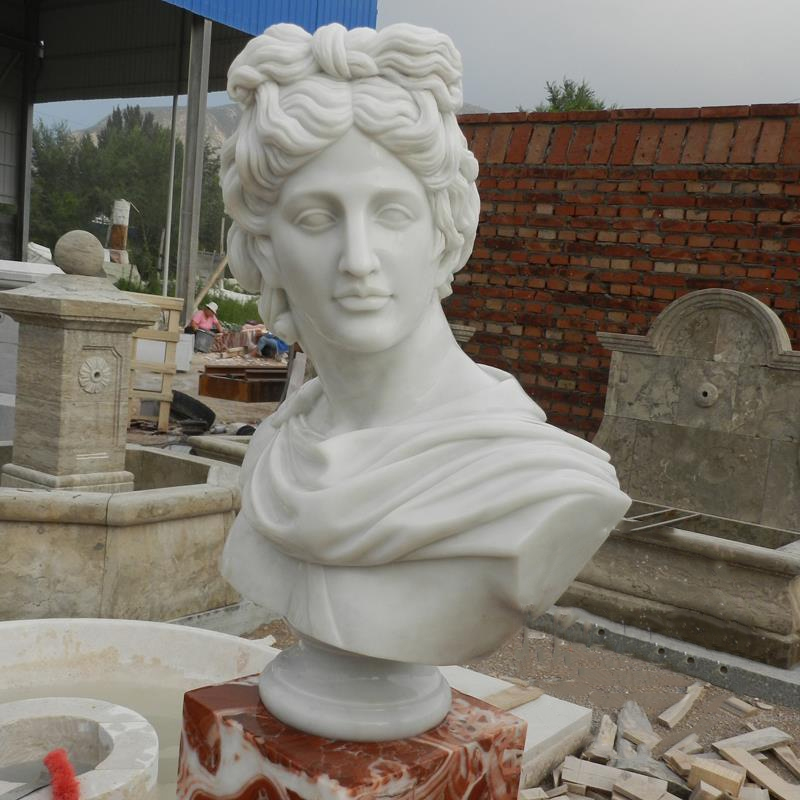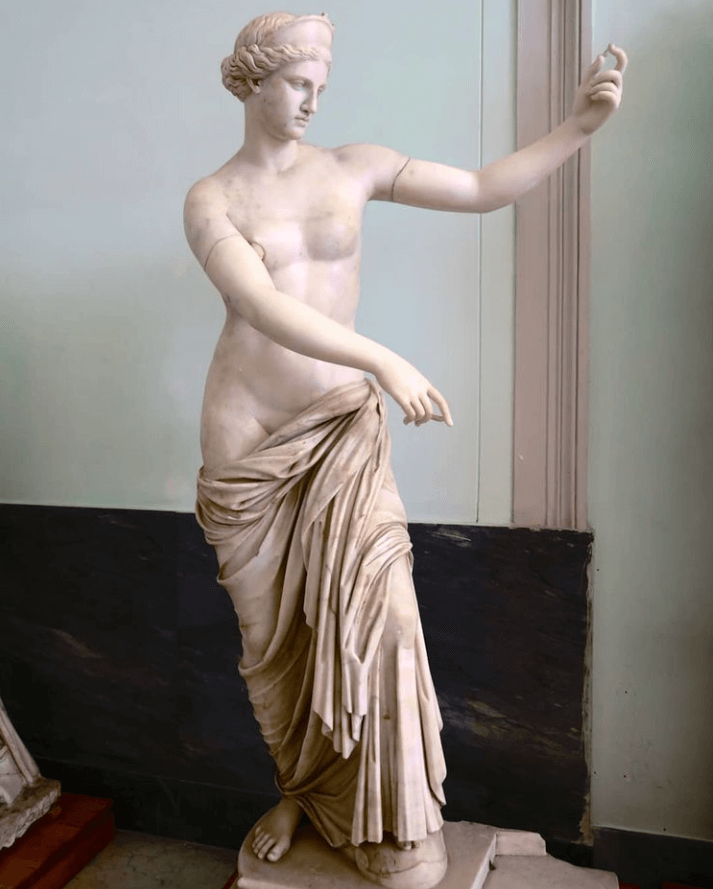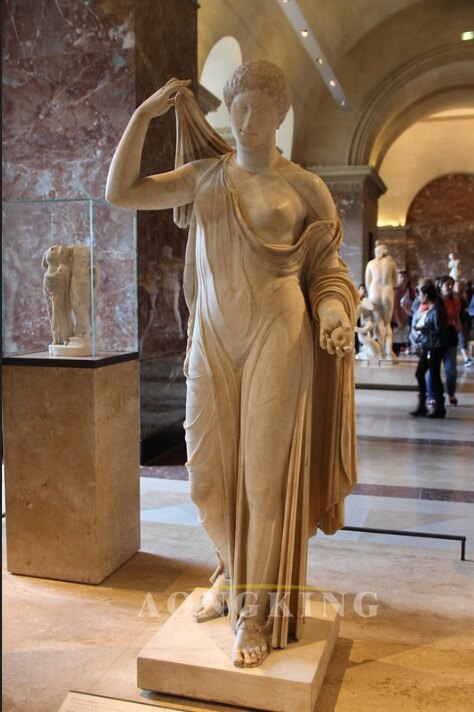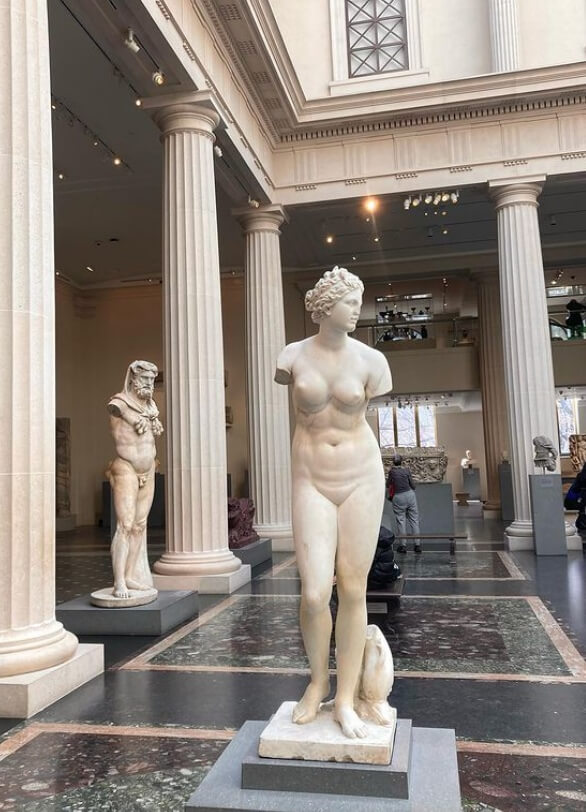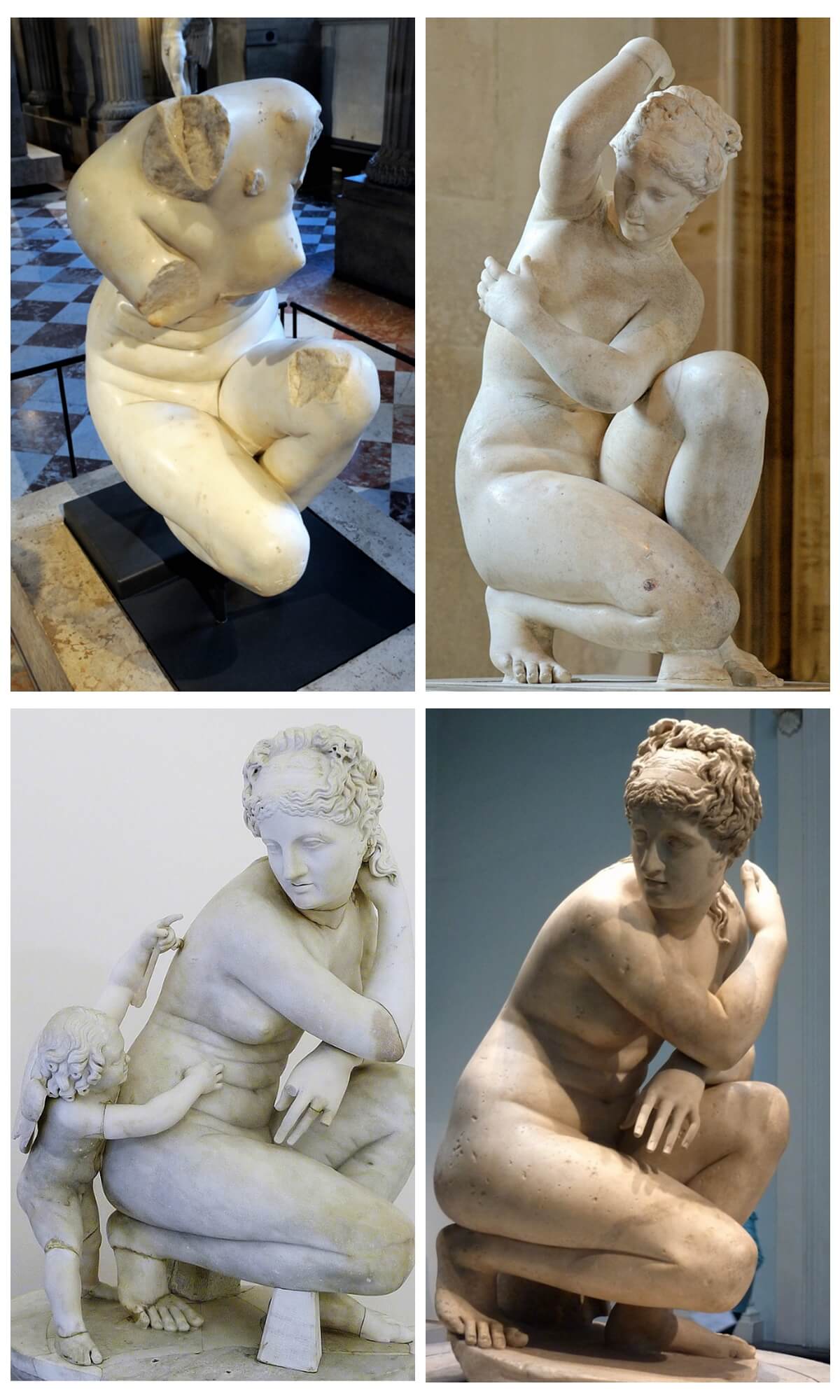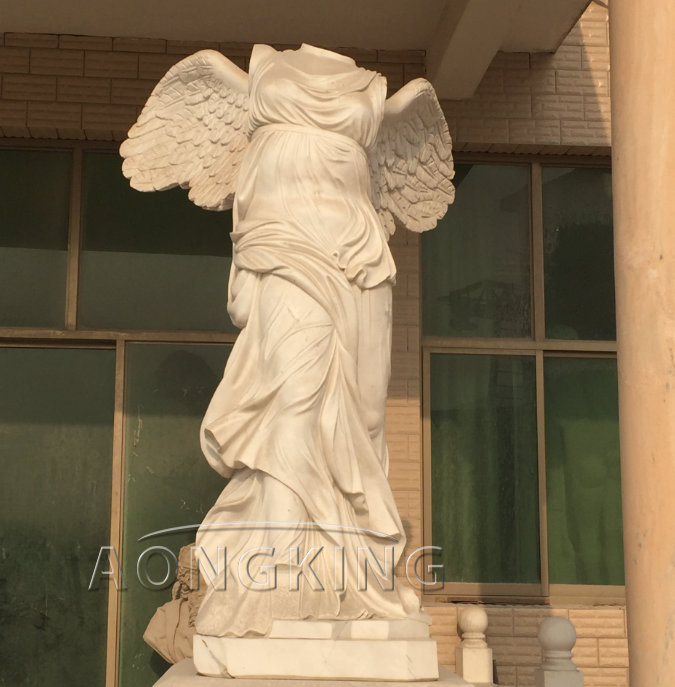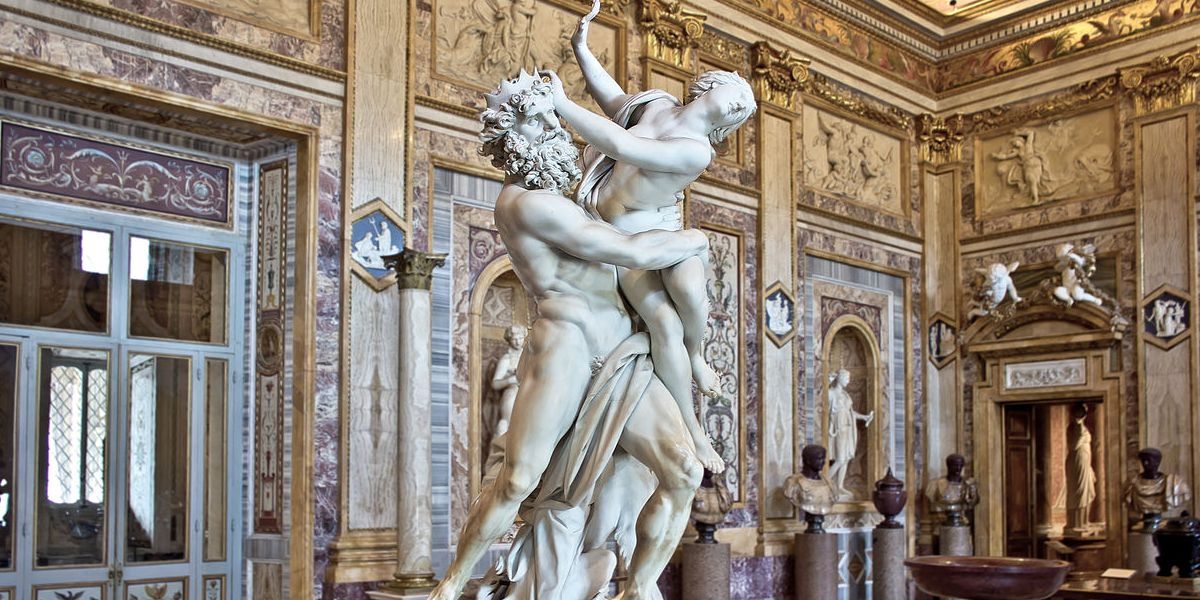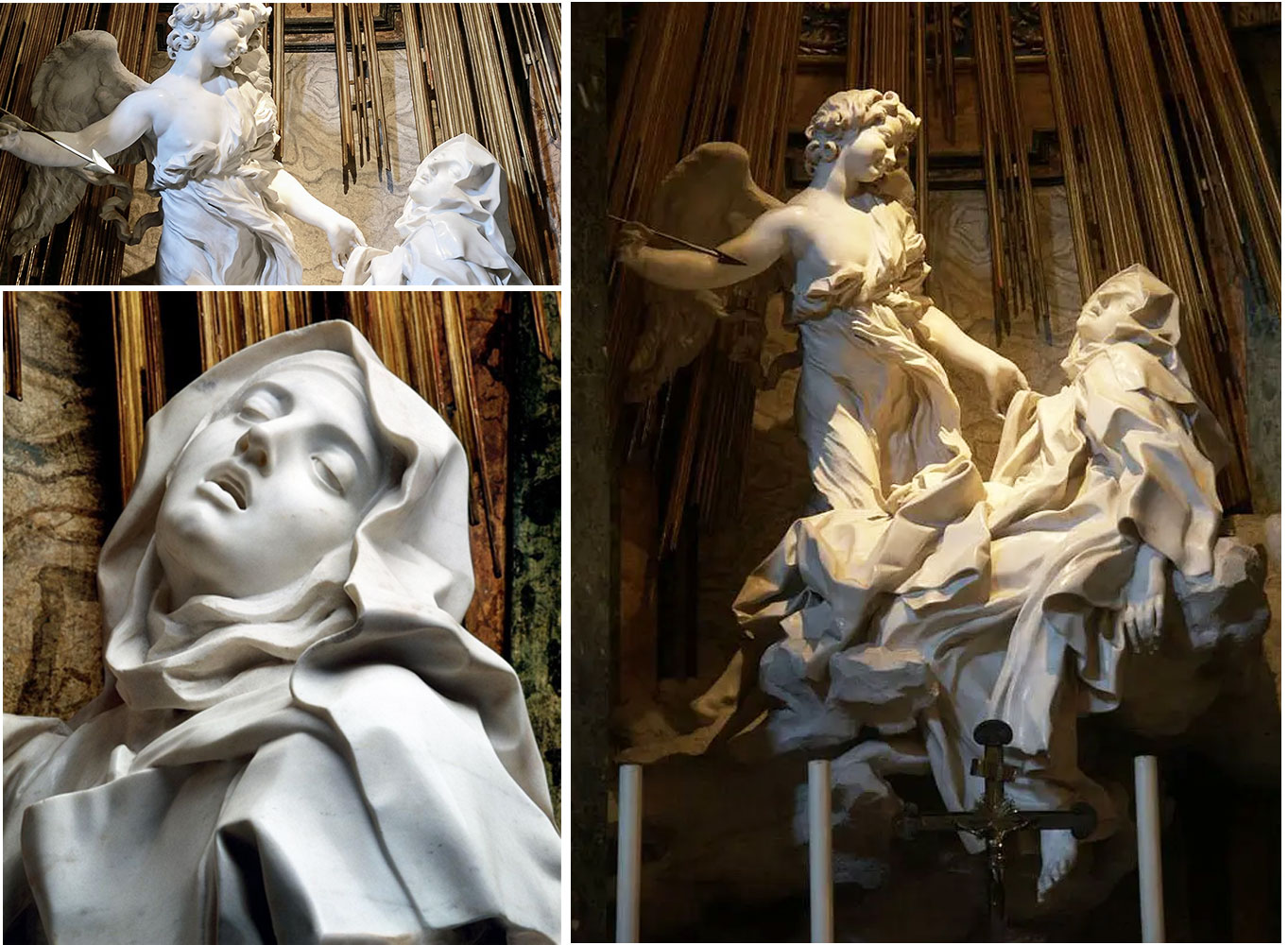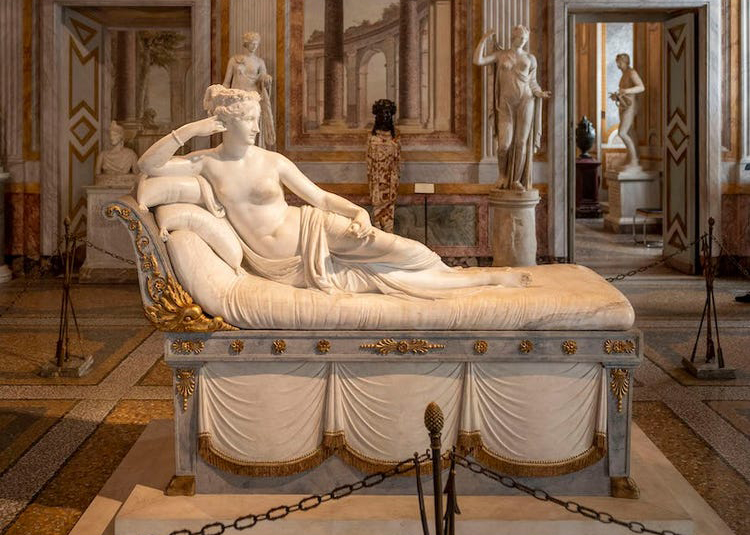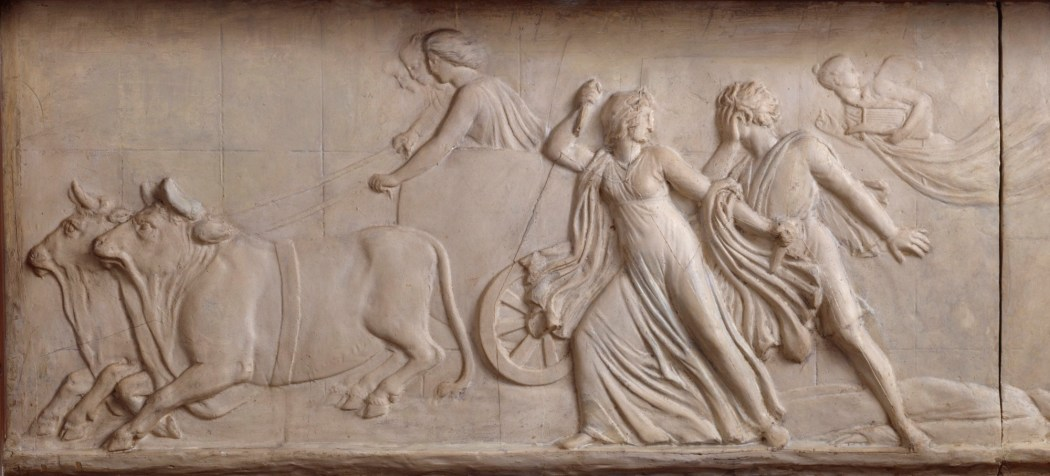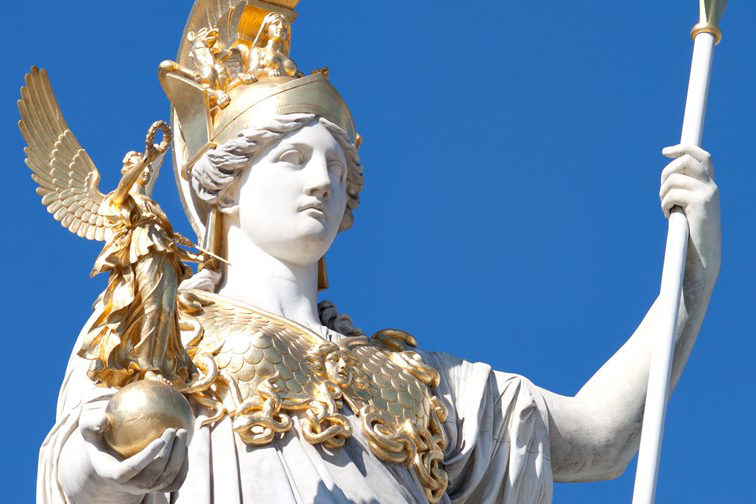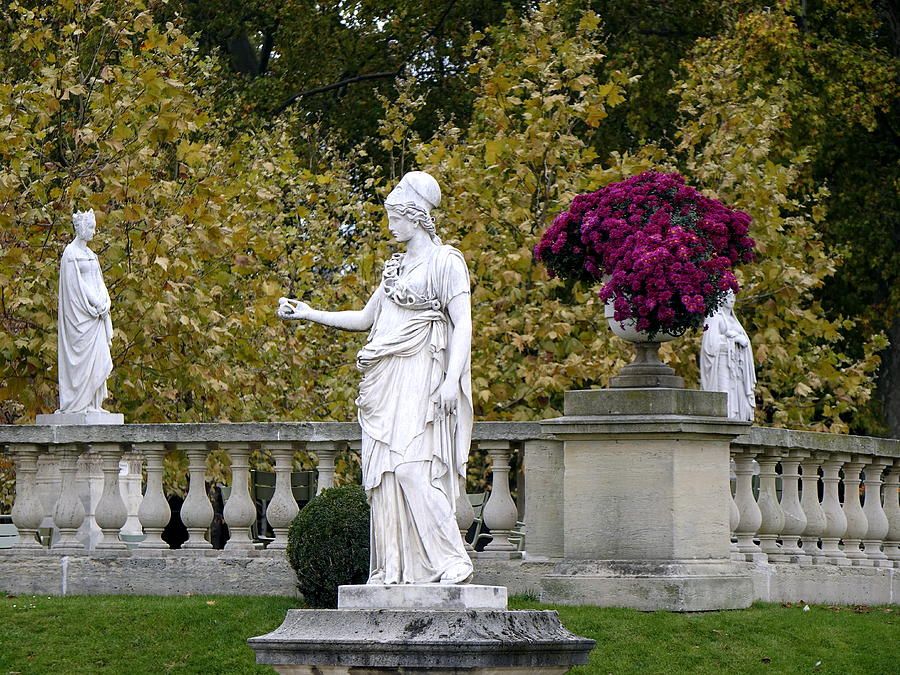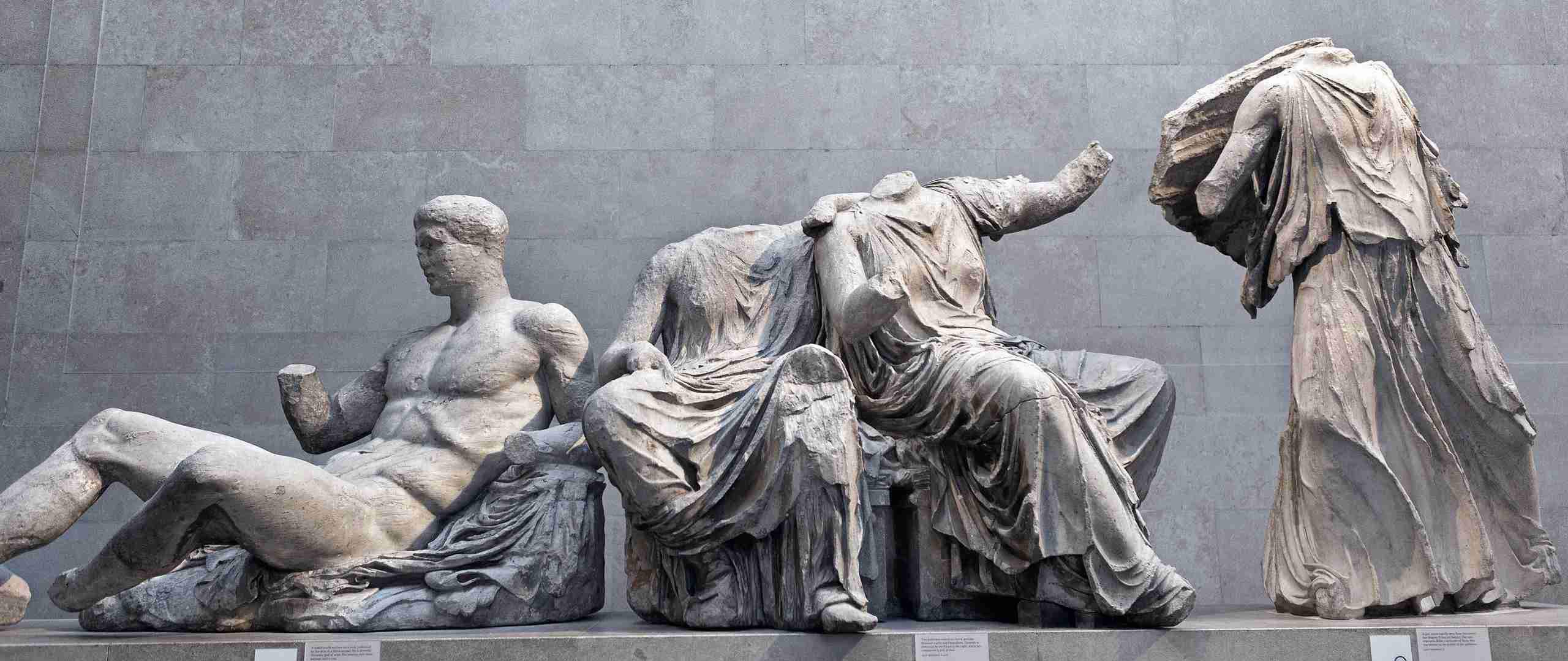The world of art has witnessed the creation of countless masterpieces that have left an indelible mark on human history. Among them, the marble Aphrodite sculpture is a timeless testimony to the eternal charm of beauty and love. Crafted by the hands of talented artists over the centuries, this symbol of divine femininity encompasses everything from historical significance to artistic mastery. In the pantheon of Greek gods, Aphrodite occupies a supreme position as the goddess of love, beauty, and desire. This divine figure has been a source of fascination for countless generations, her essence condensed in the elegant lines of marble. Artists ancient and modern have sought to capture her essence in stone, their chisels carving a path to her innermost mysteries.
Praxiteles and Aphrodite of Nidos
No insight into the world of Aphrodite’s marble sculptures can be gained without paying homage to the famous ancient Greek sculptor Praxiteles. Praxiteles gave the world Aphrodite of Nidos, a marble aphrodite statue that broke tradition and became a model of classical beauty. It was the first comprehensive depiction of a nude female figure in Greek art, setting a precedent for centuries to come. Praxiteles’ choice to depict Aphrodite in a vulnerable and intimate moment marks a significant departure from traditional images of the goddess. Rather than showcasing her divinity and power, he chose to emphasize her humanity and sensibility, making her more relatable and approachable to the audience. The sensual allure of the marble Aphrodite statue, as well as Aphrodite’s modest moments, continue to captivate audiences and spark discussions about the embodiment of femininity.
The Essence of Beauty: Aesthetic Mastery
The Aphrodite statue in marble exudes timeless aesthetic appeal. Her form harmoniously blends gentle curves and soft lines, a testament to the artist’s meticulous attention to detail. The translucency of the marble allows light to dance across her surface, casting shadows that emphasize her ethereal elegance. From the ancient Greeks to the Renaissance masters and beyond, artists have harnessed the medium’s potential to create sculptures that are both stunning and moving.
The statue of Aphrodite in marble transcends its physical form and has profound cultural significance. She represents more than just a deity; she embodies ideals of love, beauty, and desire that transcend time and borders. In Greek mythology, Aphrodite’s influence reached beyond Olympus, touching the lives of mortals and shaping their views on love. Artists, philosophers, and poets have all drawn inspiration from her image, infusing their divine essence into their works. Even in the modern world, Aphrodite continues to inspire artists and thinkers. Her image can be found in contemporary sculptures, these marble statues of Aphrodite reinterpret her timeless beauty and capture the complexity of femininity. Furthermore, her influence extends beyond art, influencing discussions of gender, love, and beauty in today’s society.
At the heart of our sculpture factory, skilled craftsmen embark on an extraordinary journey every day by creating magnificent sculptures of Aphrodite that showcase the timeless beauty of marble. The making of such a masterpiece is a subtle dance between human craftsmanship and the ancient charm of marble itself. In this article, we will delve into the intricate process of making the marble Aphrodite statue, highlighting the artistry, dedication, and passion that go into each piece.
Design and inspiration
Before the chisel touches the marble, the sculptor sketches and designs the marble aphrodite statue. Inspiration comes from classical Greek and Roman art, as well as the sculptor’s own interpretation and vision. The design phase is a crucial step, with every curve and detail carefully planned to evoke the ethereal beauty of the goddess.
Choose the right marble
The journey begins with a carefully selected marble. Not all marble is created equal and our craftsmen carefully select the best marble that meets project specifications. The choice of marble plays a vital role in determining the appearance of the final sculpture, as its color, texture, and grain are inherent characteristics of the piece.
Engraving process
After the design was completed, the marble block underwent its first transformation. The rough carving stage begins when the sculptor uses large chisels and mallets to shape the marble into a rough approximation of the final sculpture. It is a physically demanding process that requires precision and a deep understanding of the gemstone’s properties.
Once the rough shape is complete, the sculptor moves on to finer tools, such as files and sandpaper, to refine the sculpture’s shape and eliminate imperfections. Every silhouette and feature has been crafted to reflect the elegance and elegance of Aphrodite. This stage requires great patience and a keen eye for detail. The face is undoubtedly the most fascinating part of the marble aphrodite statue. The sculptor paid special attention to the shaping of facial features, including calm expression, elegant eyes, and flowing hair. Each stroke of the sculptor’s tool breathes life into the stone, bringing the goddess to life.

